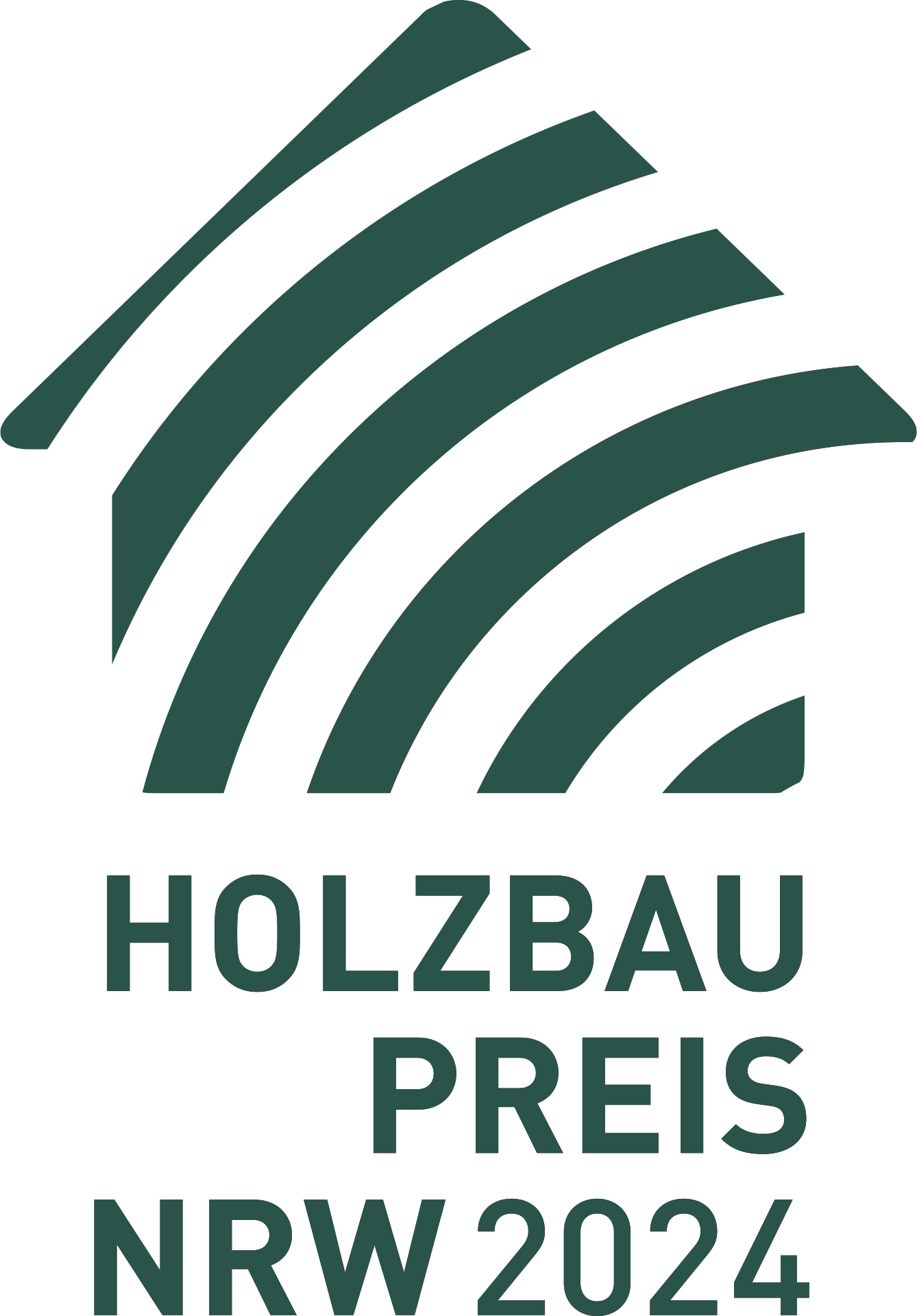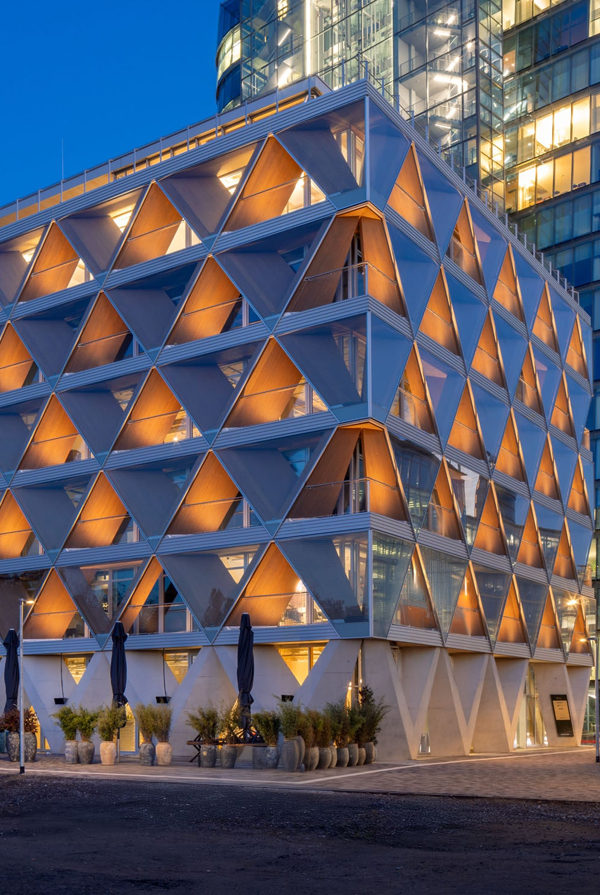
For the future of our children:
An office building
made of timber
The Cradle
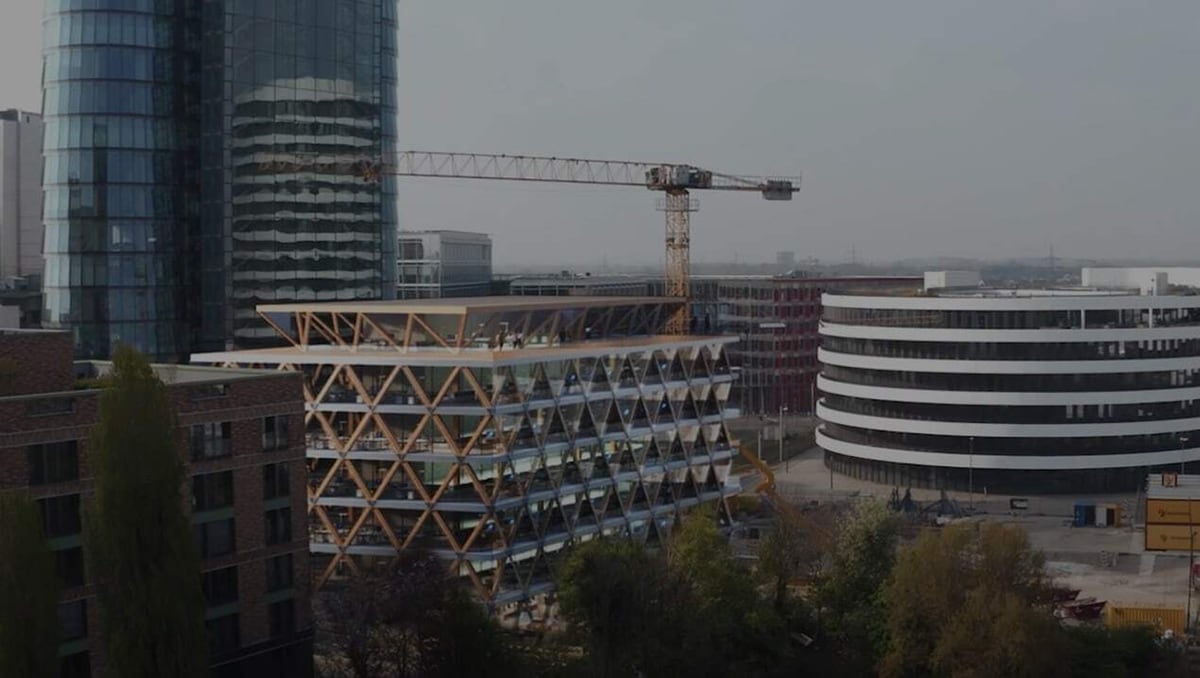
The first timber hybrid office building
in Düsseldorf
The name says it all:
Built according to the Cradle-to-Cradle® principle.
Stand-alone in the international architecture exhibition
The Cradle is situated in a prominent waterfront location in Düsseldorf's Medienhafen
An award-winning project
Cradle to Cradle®
The Cradle-to-
Cradle® principle
‘Cradle’ stands for the origin of a building or material. Circular construction according to the The Cradle-to-Cradle® principle means that as many recyclable materials as possible are used and can be recycled in the technical cycle or biodegraded in the biosphere at the end of their useful life. It is of great importance to consider the unmixed dismantlability and recyclability of building products and parts as an integral part of the design right from the planning stage. The deconstructability of a building can be ensured by using as many reversible connections and modular components as possible.
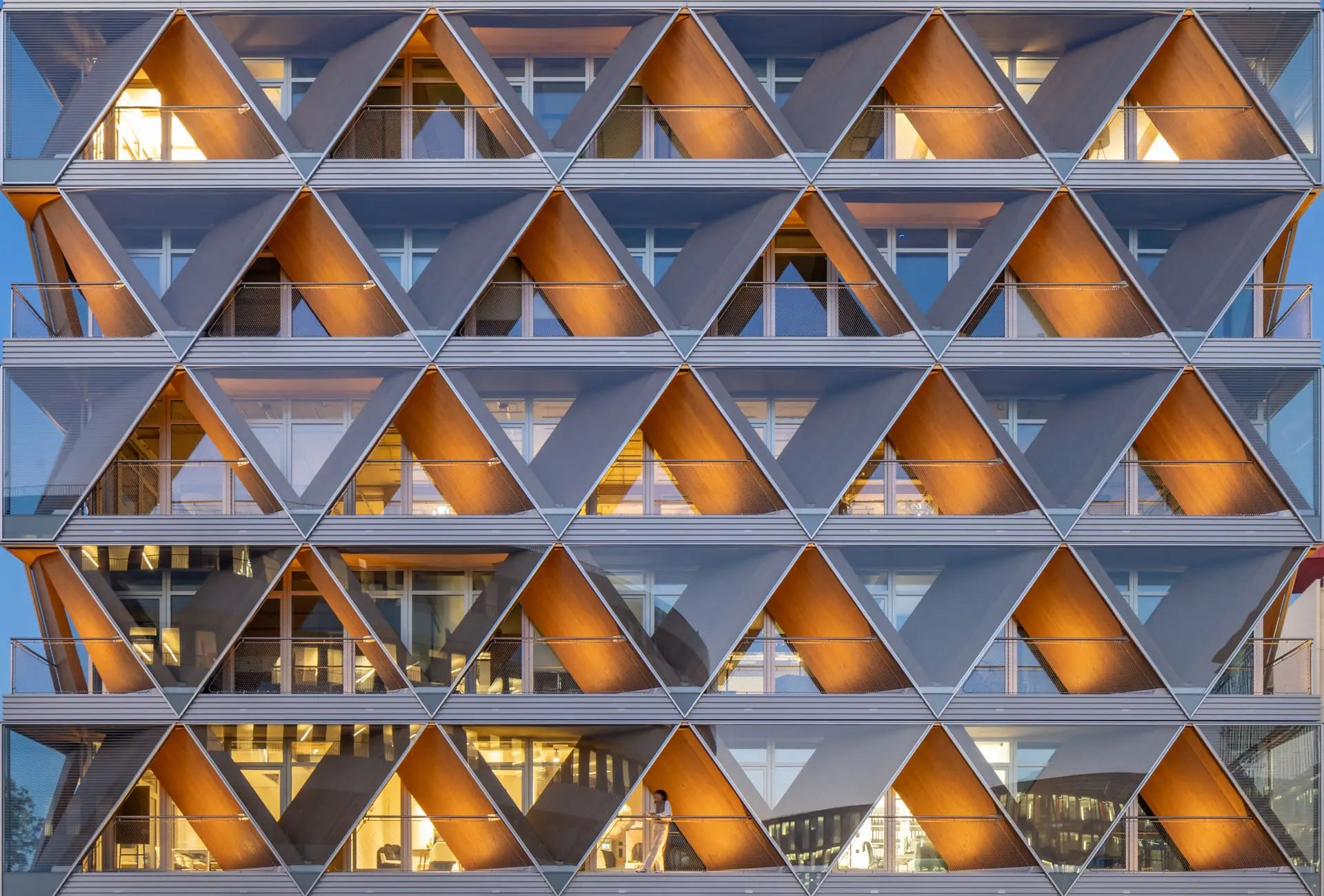
That's why we build according to the
Cradle-to-Cradle® principle:
More than half of the world's waste is produced by the construction industry. By changing this, we make an important contribution to the future of our children.
Everything remains in the cycle.
This applies to consumables such as packaging and cleaning agents, as well as durable goods such as flooring and ceiling lights.
The Cradle in detail
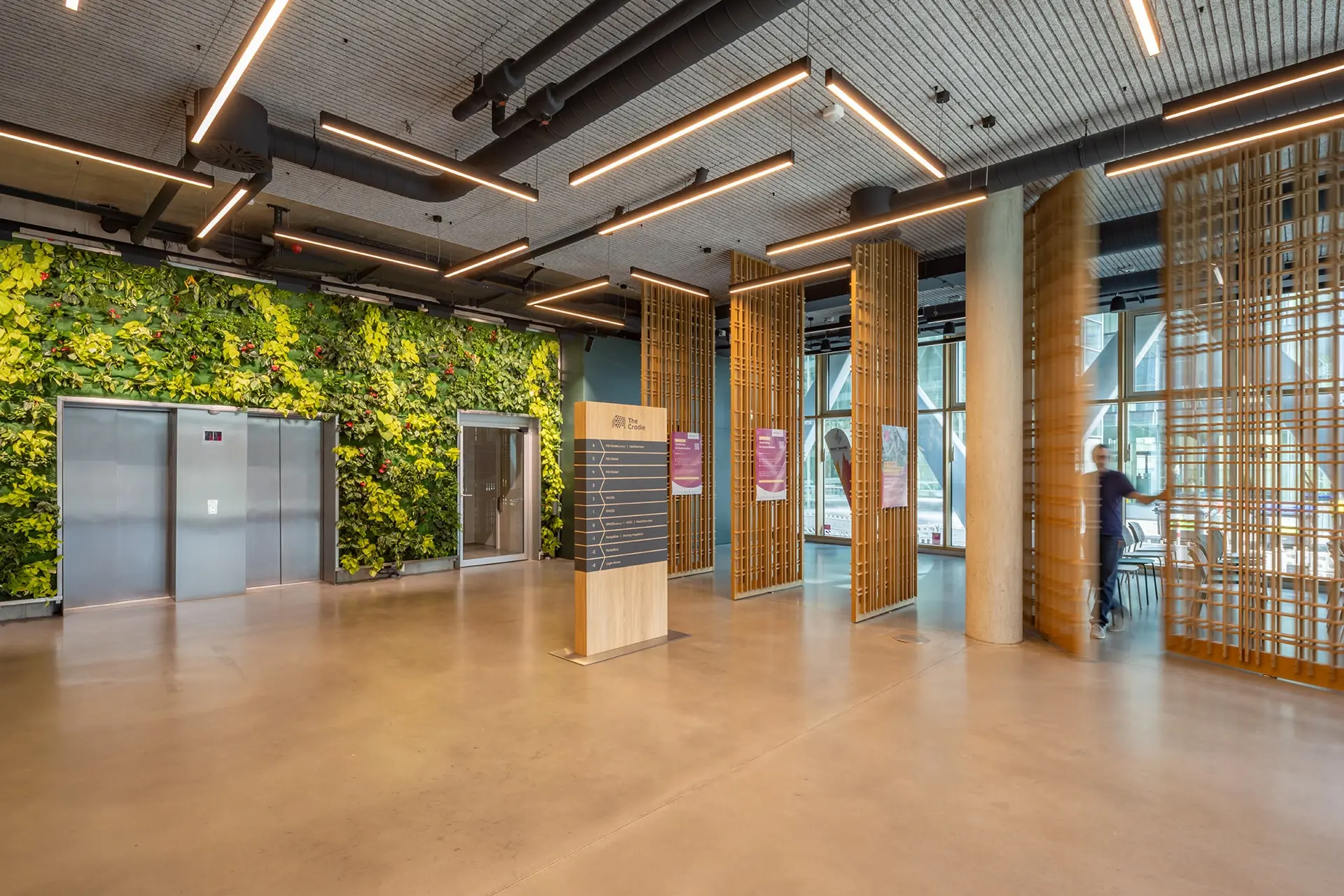
We're doing it like nature:
Good things come to those who wait.
Building according to the Cradle-to-Cradle® principle is a big challenge. For around four years, a team of architects, construction engineers, and specialist planners examined hundreds of measures - and selected the ones that were suitable for The Cradle. What impact does a building material have on air and water? Which devices save the most energy? What has a positive influence on well-being? Six categories were evaluated in total.
-
Renewable energies
-
Human & health
-
Material quality & cycles
-
Diversity
-
Water
-
Air quality
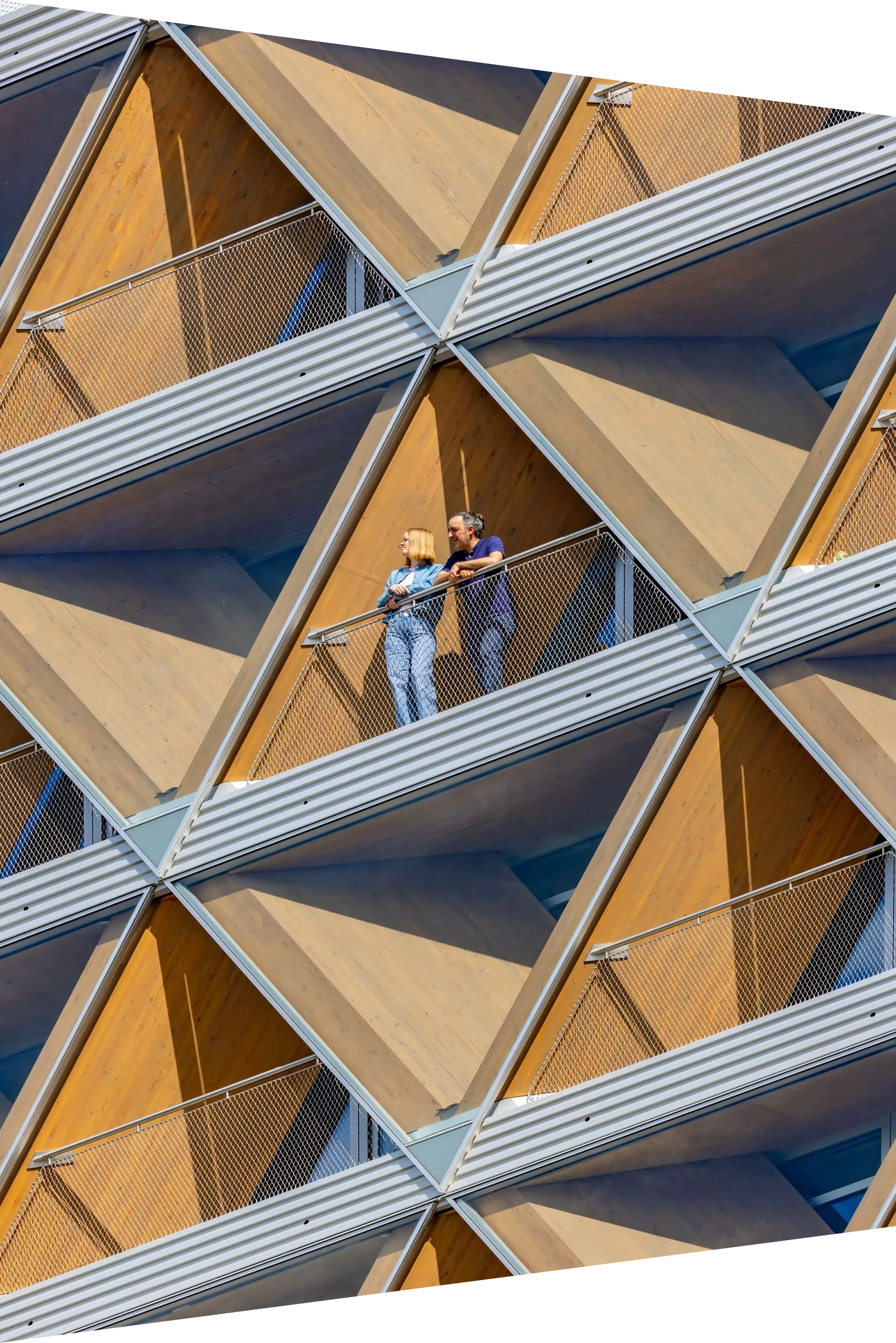
Building with timber - a benefit
for generations
Almost the entire façade as well as all the columns and ceilings of The Cradle are made from timber elements sourced exclusively from sustainable forestry in Europe. Wood replaces other building materials such as steel or concrete. It regulates humidity, promotes health for allergy and asthma sufferers, and emits warmth in winter and coolness in summer. Additionally, it calms the cardiovascular and nervous systems. Prof. Dr. Maximilian Moser from the University of Graz has found in studies that students in classrooms with solid timber furniture are much more relaxed than students in classrooms without timber. Their hearts beat around 8,600 times less per school day.
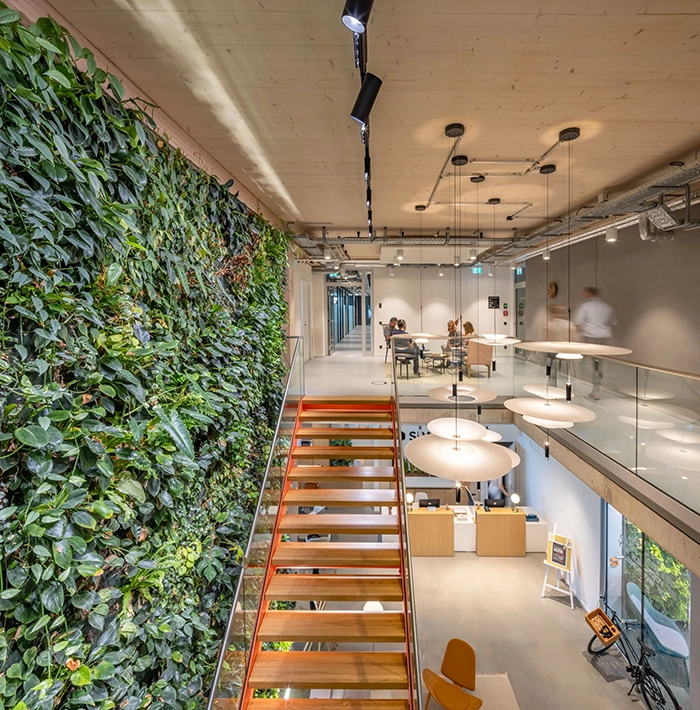

Improved breathing air -
inside and outside
There are many ways to improve the air quality in and around a building. The Cradle only uses materials that do not have a harmful effect on people or the environment. An extensive material testing process was carried out for quality assurance.
Planted walls purify and renew the air naturally, open-pored clay surfaces ensure moisture equalisation and CO2 alarms increase the supply of fresh air when the oxygen content in meeting rooms drops.
The intensively and extensively greened roof and staggered storey areas even improve the climate in the Medienhafen and contribute to local biodiversity.
By the way: in The Cradle, we use the so-called ‘Banned List of Chemicals’ to ensure that only healthy and pollutant-free materials are used.
That's roughly the same as traveling around the world by plane 287 times.
Reducing CO2 emissions even
during construction
The building materials used in the construction of The Cradle have already saved 50% CO2 compared to conventional buildings.
The amount of CO2 saved is equivalent to around 12 million kilometres by plane. Even if you swapped two long-distance trips a year from Düsseldorf to Thailand for a holiday in the garden, it would take you around 300 years to save that much CO2 (source: EPEA).
Self-made electricity
The use of renewable energy to reduce the use of fossil fuels is an important part of The Cradle. A photovoltaic system on the roof converts sunlight into electricity, which is used for both the building services and the lighting in the common areas. This not only benefits the environment, but also the tenants by reducing operating costs.
Urban mobility for everyone
At The Cradle, tenants of the building and all neighbours can rent and return electric cars and e-bikes, reducing traffic in the MedienHafen and providing a quick and cost-effective alternative to owning a car. The vehicles can be easily booked via beatshare or at the mobility station in the foyer.i
-

Booking of vehicles
-

Communication with each other
-

Reservation of meeting rooms
-

Access to services
-

Reporting damages in the building
The Cradle App
A user-friendly app provides digital services to people in the building, such as the ability to communicate with each other or report issues to the building service. Vehicles, meeting rooms, and services can also be booked directly through the app.
The passport for
the building
All components and measures are recorded in a building passport - so that even in 50 years, everyone knows what was installed when and where. Through a central interface, the passport is automatically updated with each replacement or modification of a building component.

